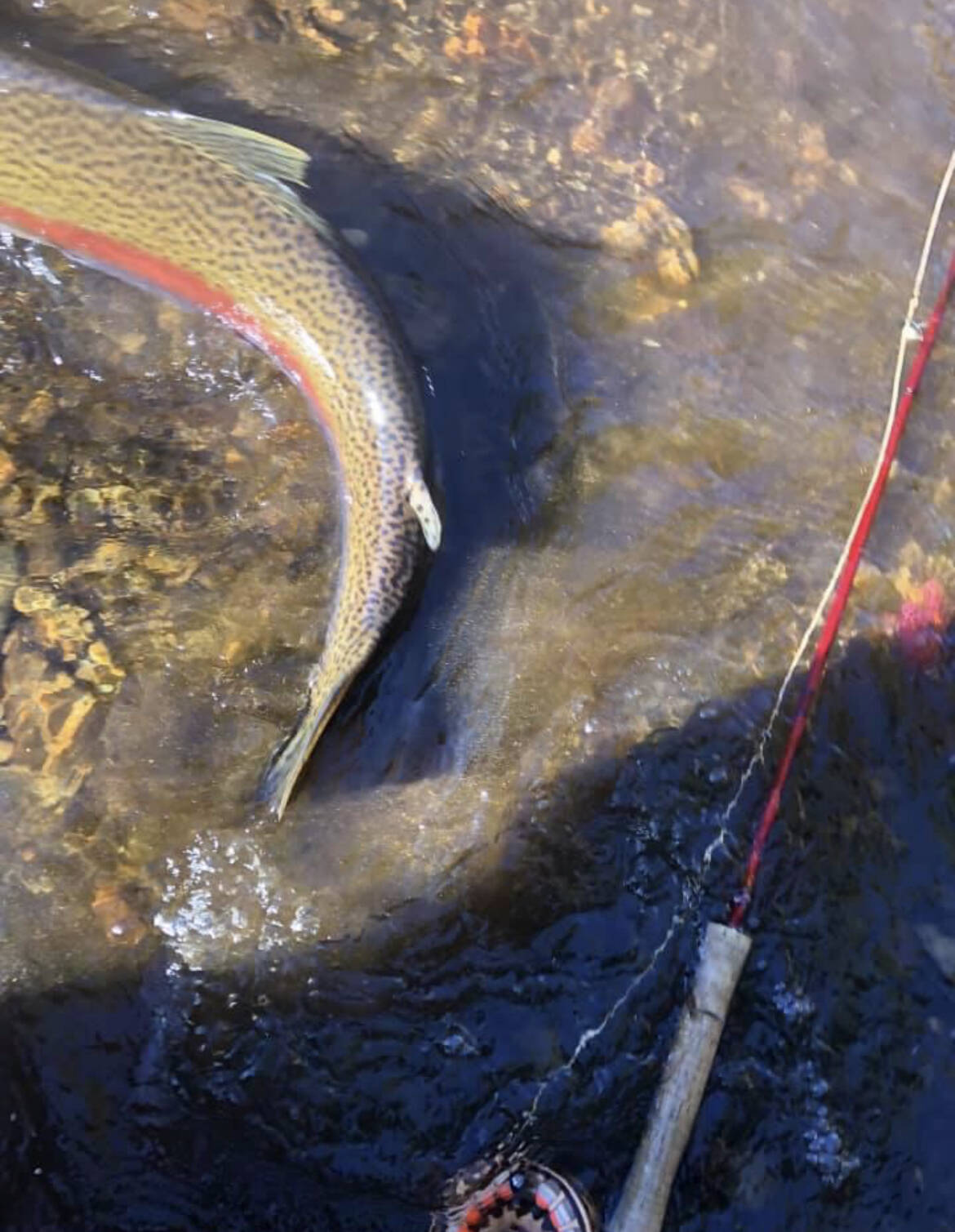Thirty yards above the money spot, I threw an awful cast that piled up. Rather than pick it all up and recast, I stripped in some line, threw in a mend and let it fish.
The current pulled the line and the fly became presentable. Beneath an unremarkable tree the fly started to swing then stopped abruptly. It darted slightly in the opposite direction, then violently back. Fish on.
The water both up and down river from the pocket under the tree was fairly shallow, but the fish knew the deepest lanes and shot upriver, then down. Inspired by the current it continued downriver, spinning my reel.
There is romance in chasing a fish downriver like Paul Maclean, but the reality is rocks are hard if not hard and sharp and the water cold. To attempt a mad scramble over slick rocks was to invite a spill. There would be no running.
I slid my wading boots into what felt like solid footing as I pursued the fish. As the steelhead approached a log, I took a solid stance, reeled down and lifted the rod in an attempt to turn its head. This is a risky move, but has to happen at some point. The fish has to be commanded, or made to stop and turn, especially if it’s nearing the safety of a snag. The current will then work for you. If the fish holds it gathers strength, but you collect line. In terms of feet you’re about back where you started, but the fish has used up juice.
We both caught our breath, me from the shin-deep shallow edge of the river, it in the depths of the pocket I was working down to fish in the first place. The hole was likely spoiled now. It can hold a few fish and I’ve had success working down to it and letting hooked fish run down and out of it to a gentle beach to land and release. This keeps commotion to a minimum. For all they know, their buddy just took off for a quick spin. After releasing the fish, I can calmly make my way up above the pocket and try to hook another. Fighting a fish where you want to swing a cast can agitate the others and the bite can stop.
I attempted to nudge the steelhead downstream slightly away from the sharper rocks around my feet. It obliged without turning its head. It simply gave into the tension I provided.
I collected more line and glided the steelhead closer. The flanks were gashes of vivid red. It was as beautiful as it was strong and I felt the pending doom steelheaders sometimes experience when the angler knows it’s been too easy. A fish like this has more than just one big run in it, especially if the first run was assisted by the current.
It’s going to run. It’s going to run.
I pulled my net from my sling still unconvinced the fish would come to the net so easily. The second a fin touched gravel or my net hit the water, it would flee straight to the snag across the river, wrap around a branch and break me off. It would happen that fast.
But it didn’t.
I reached down and tailed it, dropped my rod, turned it on its side, removed the hook and before I could admire it, water splashed into my face and down the front of my waders.
Fair enough.
• Jeff Lund is a freelance writer based in Ketchikan. His book, “A Miserable Paradise: Life in Southeast Alaska,” is available in local bookstores and at Amazon.com. “I Went to the Woods” appears twice per month in the Sports & Outdoors section of the Juneau Empire.

